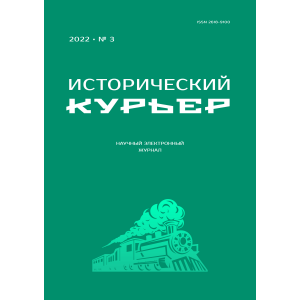“In winter in a sled with a dog harness, and in summer incessantly with an oar and with a pole”, these words of the Yeniseysk voivode A.L. Oshanin reflect a complex process of mastering the vast expanses of Northeastern Eurasia, unthinkable without creating an extensive transport network. The issue of the Historical Courier offered to the readers is devoted to the discussion of a set of problems related to the formation and development of water communications in Northeastern Eurasia (which in historiography is increasingly understood as the territory of the modern Russian Federation), starting from ancient times up to the present day. The rapid and successful development of water (both river and sea) arteries, which served as the main transport routes, provided a strong connection between the western and eastern, northern and southern territories. How important was the meaning of water communications for the study and economic development of hard–to-reach areas, what role they played in the daily life of various segments of the population, how sometimes difficult and even dramatic it was to the search and open new ways for the passage of water transport, the points of interaction in this matter between the state and representatives of private capital – all these issues are characterized in the materials published in the issue.
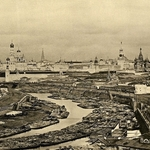 Trade by Rivers and Seas
Trade by Rivers and Seas
G.N. Ulianova
The Grain and Flour Trade in Moscow in the First Half of the 19th Century: a Water Transportation of Grain, Flour and Cereals
The famous photograph of the early 1860s from the photo album published by the merchant and lover of antiquity, Chairman of the Moscow Stock Exchange Committee N.A. Naydenov (1834–1905) shows a panorama of the Moscow River, densely crowded with ships, barks and barges. The use of waterways played an important role in Moscow trade and especially in the transportation of bread (in grain and flour) and cereals. Throughout the water area of the Oka and the Moskva River within the Moscow and several adjacent provinces, there was a developed infrastructure, which included the delivery of goods to equipped piers, temporary storage in barns, loading on ships, transportation to the destination. The study of statistical data showed that in the 1830s – 1840s, 5–88 % of wheat in grain and 21–36 % of rye in grain, 12–47 % of wheat flour and 45–53 % of rye flour were delivered by water in different years. The analysis of the archival register on the import of bread in 1813–1814 testifies to the wide geography of deliveries, in which merchants, nobles and petty bourgeoisie of several Central Russian provinces were involved.
Publishing: 28/06/2022
How to cite: Ulianova G.N. The Grain and Flour Trade in Moscow in the First Half of the 19th Century: a Water Transportation of Grain, Flour and Cereals // Historical Courier, 2022, No. 3 (23), pp. 11–23. [Available online: http://istkurier.ru/data/2022/ISTKURIER-2022-3-01.pdf]
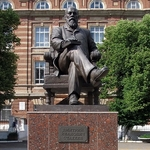 Trade by Rivers and Seas
Trade by Rivers and Seas
I.V. Maslova
Reflection of the Entrepreneurial Activity of Merchants in the Baikal-Amur Region in the Travel Notes of D.I. Stakheev (Late 1850s – 1860s)
The article examines the role of water communications in the Baikal-Amur region in the entrepreneurial activity of the merchants based on the analysis of D.I. Stakheev “Beyond Baikal on the Amur”, published in 1869. The author of the notes belonged to the merchant circle and was engaged in the tea trade in Kyakhta, representing the interests of the family business, so the history of entrepreneurship became one of the storylines of his story. The author delves into stories about the entrepreneurial activities of the merchant class, provides statistics on commercial transactions, tries to make economic forecasts and estimates, describes the psychology of actions and behavioral practices of Russian merchants in the mid-19th century.
Publishing: 28/06/2022
How to cite: Maslova I.V. Reflection of the Entrepreneurial Activity of Merchants in the Baikal-Amur Region in the Travel Notes of D.I. Stakheev (Late 1850s – 1860s) // Historical Courier, 2022, No. 3 (23), pp. 24–34. [Available online: http://istkurier.ru/data/2022/ISTKURIER-2022-3-02.pdf]
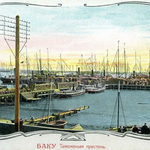 Trade by Rivers and Seas
Trade by Rivers and Seas
T.V. Pavlina
Trade Security and Customs Institutions in the Caspian Sea in the 19th Century
The Caspian region is one of the oldest trade intersections in Eurasia. At all times, security issues have been crucial here to ensure the success of trading operations. They acquired particular importance in the 19th century in connection with the accession to the Russian empire of the Caspian territories of Transcaucasia and the transition of the Caspian Sea under the jurisdiction of Russia. The article analyzes the experience of the Russian government in ensuring foreign trade security in the region during this period and the role of customs institutions in this area.
Publishing: 28/06/2022
How to cite: Pavlina T.V. Trade Security and Customs Institutions in the Caspian Sea in the 19th Century // Historical Courier, 2022, No. 3 (23), pp. 35–48. [Available online: http://istkurier.ru/data/2022/ISTKURIER-2022-3-03.pdf]
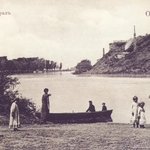 Trade by Rivers and Seas
Trade by Rivers and Seas
K.A. Abdrakhmanov
Waterways in the Business Activity of the Orenburg Post-Reform Merchants (the Second Half of the 19th – Early 20th Century)
The article is devoted to the daily work of Orenburg merchants of the second half of the 19th ‒ early 20th century, engaged in the organization of navigation on the rivers of their region and the neighboring Ufa Province. Archival materials, including sources of personal origin, made it possible to identify the main problems on the way to the implementation of this enterprise. The complex of difficulties included the hydrographic parameters of the Orenburg rivers unsuitable for the movement of large steamships (shallow depth, tortuosity, pitfalls, rapid flow), the high cost of work aimed at preparing piers and warehouses, fear of losing finances and dislike of progress by the local Cossacks.
Publishing: 28/06/2022
How to cite: Abdrakhmanov K.A. Waterways in the Business Activity of the Orenburg Post-Reform Merchants (the Second Half of the 19th – Early 20th Century) // Historical Courier, 2022, No. 3 (23), pp. 49–61. [Available online: http://istkurier.ru/data/2022/ISTKURIER-2022-3-04.pdf]
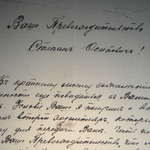 Trade by Rivers and Seas
Trade by Rivers and Seas
A.E. Goncharov
Admiral S.O. Makarov and the Kara Sea Route: Organizing Timber Exports from the Yenisei River
This article discusses an attempt to organize timber export from the Yenisei to Europe, undertaken by Vice Admiral Stepan Osipovich Makarov in 1898–1899. This distinguished Arctic explorer is associated not only with his icebreaker projects, but also with an irreconcilable, according to some authors, position regarding foreign trade along the Northern Sea Route. However, the study of this episode of polar history reveals a very different image of Makarov – a man who for the first time approached the solution of the problem of Arctic shipping with a full understanding of the underlying technical difficulties. Makarov, unlike many of his contemporaries, who focused their attention primarily on the economic side of the issue, assuming that subsidizing foreign import trade was suffice for the route’s development, understood the inconsistency of this approach, and, therefore did support the continuation of the free-port policy. And yet, Makarov cannot be regarded as a hard-liner in terms of Russian protectionism; he never denied foreign involvement in maritime trade with Siberia and even facilitated it.
Publishing: 28/06/2022
How to cite: Goncharov A.E. Admiral S.O. Makarov and the Kara Sea Route: Organizing Timber Exports from the Yenisei River // Historical Courier, 2022, No. 3 (23), pp. 62–76. [Available online: http://istkurier.ru/data/2022/ISTKURIER-2022-3-05.pdf]
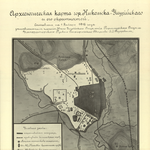 Study and Development of Waterways
Study and Development of Waterways
O.V. Dyakova
Waterway “from Jurchens to Russians” in the Razdol’naya River Basin of Southern Primorye
The article presents a brief overview of the history of the development of the Razdolnaya River basin flowing in Primorye. The Razdolnaya River served as a river highway for three thousand years. For the first time, the waterway began to be mastered in the 1st millenium. In the Middle Ages, the Tungus-Manchus (Bohai and Jurchen) used the waterway, who traveled to Korea, Japan, and China on sailing ships. The river was the road of life for the aborigines of Primorye in Modern times. They traveled by ulimagd boats throughout the Far Eastern region. The main waterway along the Razdolnaya played an important role in the development of the Russian Far East. Steamboats transported people and cargo. Nowadays Razdolnaya is a favorite place for recreation and fishing.
Publishing: 28/06/2022
How to cite: Dyakova O.V. Waterway “from Jurchens to Russians” in the Razdol’naya River Basin of Southern Primorye // Historical Courier, 2022, No. 3 (23), pp. 77–85. [Available online: http://istkurier.ru/data/2022/ISTKURIER-2022-3-06.pdf]
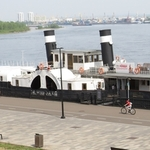 Study and Development of Waterways
Study and Development of Waterways
S.T. Gaydin, G.A. Burmakina
Development of Waterways in the Northern Part of the Yenisey Basin in the 17th – Early 20th Century
An overview of the development of the waterways in the Northern Part of the Yenisey basin in the period from the construction of the Mangazeya settlement in 1601 to the organization of regular steamship traffic in the early 20th century is presented. The development of river shipping, its impact on the life of the population and the usage of natural resources is shown. The interaction of government structures and representatives of private capital in this area is mentioned.
Publishing: 28/06/2022
How to cite: Gaydin S.T., Burmakina G.A. Development of Waterways in the Northern Part of the Yenisey Basin in the 17th – Early 20th Century // Historical Courier, 2022, No. 3 (23), pp. 86–103. [Available online: http://istkurier.ru/data/2022/ISTKURIER-2022-3-07.pdf]
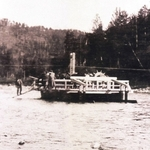 Study and Development of Waterways
Study and Development of Waterways
T.A. Kiskidosova
On the Issue of River Shipping in the Upper Reaches of the Yenisei in the Late 19th – Early 20th Century
The article is devoted to the issue of river navigation in the upper reaches of the Yenisei in the late 19th – early 20th century. It was revealed that the lack of communication routes significantly complicated the economic development of the region. The work of commissions and meetings interested in establishing regular river navigation in the upper reaches of the Yenisei is shown. The attempt to establish a water link between Russia and Tuva in the pre-revolutionary period required significant financial costs and was not completed.
Publishing: 28/06/2022
How to cite: Kiskidosova T.A. On the Issue of River Shipping in the Upper Reaches of the Yenisei in the Late 19th – Early 20th Century // Historical Courier, 2022, No. 3 (23), pp. 104–113. [Available online: http://istkurier.ru/data/2022/ISTKURIER-2022-3-08.pdf]
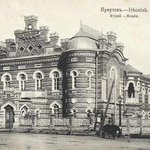 Study and Development of Waterways
Study and Development of Waterways
V.V. Tkachev
The Participation of the Artistic Intelligentsia of Irkutsk in the Study and Popularization of the Water Space of the Siberian North and Baikal Region in the Second Half of the 19th – Early 20th Centuries
The article highlights the participation of the artistic intelligentsia of Irkutsk and close to it collectors in the study and popularization of the water space of the Siberian North and the Baikal region in the second half of the 19th – early 20th centuries. The work of artists as part of hydrographic expeditions along Siberian rivers and Baikal, their participation in the activities of regional scientific societies, collecting and exhibition activities is characterized.
Publishing: 28/06/2022
How to cite: Tkachev V.V. The Participation of the Artistic Intelligentsia of Irkutsk in the Study and Popularization of the Water Space of the Siberian North and Baikal Region in the Second Half of the 19th – Early 20th Centuries // Historical Courier, 2022, No. 3 (23), pp. 114–123. [Available online: http://istkurier.ru/data/2022/ISTKURIER-2022-3-09.pdf]
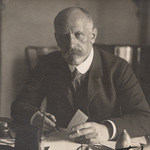 Study and Development of Waterways
Study and Development of Waterways
A.V. Shakhmatov, A.P. Dvoretskaya, A.V. Surzhko
In the Footsteps of F. Nansen. History of Memorial Taimyr Arctic Expeditions in the Late 20th – Early 21st Centuries
For the first time in Russian historiography, based on a complex of historical sources, the article shows the significance of the memorial Taimyr Arctic expeditions of 1990 and 2013 as an important factor in preserving and “updating” historical memory. These expeditions in general followed the path of the famous Norwegian traveler F. Nansen, along which he traveled in 1913 during a trip to Yenisei Siberia. The usefulness and necessity of carrying out similar flights in the future with an international composition of students and teachers is proved.
Publishing: 28/06/2022
How to cite: Shakhmatov A.V., Dvoretskaya A.P., Surzhko A.V. In the Footsteps of F. Nansen. History of Memorial Taimyr Arctic Expeditions in the Late 20th – Early 21st Centuries // Historical Courier, 2022, No. 3 (23), pp. 124–136. [Available online: http://istkurier.ru/data/2022/ISTKURIER-2022-3-10.pdf]
 From the First Person
From the First Person
E.V. Komleva
“Siberian Canal”: the Project of the Krasnoyarsk Merchant M.K. Sidorov to Connect the Ob and Yenisei Lower Reaches (1870s)
The article discusses the project to connect the Ob and Yenisei Lower Reaches, put forward by Krasnoyarsk merchant Mikhail Konstantinovich Sidorov in the 1870s. It reveals the content of the plan, its positive aspects in comparison with other existing projects. The texts written by M.K. Sidorov and deposited in the fonds of the Russian state historical archive are published. These materials contain a description of the “Siberian Canal” designed by him.
Publishing: 28/06/2022
How to cite: Komleva E.V. “Siberian Canal”: the Project of the Krasnoyarsk Merchant M.K. Sidorov to Connect the Ob and Yenisei Lower Reaches (1870s) // Historical Courier, 2022, No. 3 (23), pp. 137–163. [Available online: http://istkurier.ru/data/2022/ISTKURIER-2022-3-11.pdf]
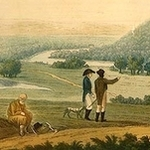 Waterways and Reservoirs in the Daily Life of the Population: Perception, Usage
Waterways and Reservoirs in the Daily Life of the Population: Perception, Usage
S.V. Filatova
A Reservoir in the Cultural and Everyday Space of the Provincial Nobility in the Late 18th – Early 20th Centuries (Based on the Materials of the Penza Region)
The article is devoted to the problem of the place and role of a reservoir in the cultural and everyday space of the provincial nobility in the late 18th – early 20th centuries. The specific components of this issue are considered: water resources and the construction of a manor estate; entertainment associated with waterways: hunting, fishing, swimming, cruises and walks, observing natural cycles; reservoir as the basis of creative inspiration, self-realization and the scope of the commercial initiative. The study was conducted on the materials of the Penza region and relies mainly on sources of personal origin.
Publishing: 28/06/2022
How to cite: Filatova S.V. A Reservoir in the Cultural and Everyday Space of the Provincial Nobility in the Late 18th – Early 20th Centuries (Based on the Materials of the Penza Region) // Historical Courier, 2022, No. 3 (23), pp. 164–176. [Available online: http://istkurier.ru/data/2022/ISTKURIER-2022-3-12.pdf]
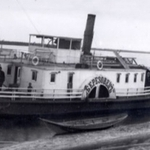 Waterways and Reservoirs in the Daily Life of the Population: Perception, Usage
Waterways and Reservoirs in the Daily Life of the Population: Perception, Usage
E.V. Pocherevin
Zemstvo Steamships in the Tobolsk Province in the Early 20th Century for Transport Support of Local Management Structures
The article analyzes the organization of zemstvo shipping in the Berezovsky uyezd of the Tobolsk province at the beginning of the 20th century. Since there was a lack of roads in the county, the provincial administration used steam ships for official transportation. It was revealed that if at the beginning of the period under review there were difficulties in finding a vessel for rent, then later competition developed between the owners of steamships for the right to place them at the disposal of the local administration.
Publishing: 28/06/2022
How to cite: Pocherevin E.V. Zemstvo Steamships in the Tobolsk Province in the Early 20th Century for Transport Support of Local Management Structures // Historical Courier, 2022, No. 3 (23), pp. 177–185. [Available online: http://istkurier.ru/data/2022/ISTKURIER-2022-3-13.pdf]
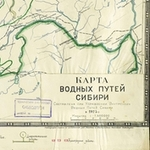 Waterways and Reservoirs in the Daily Life of the Population: Perception, Usage
Waterways and Reservoirs in the Daily Life of the Population: Perception, Usage
M.V. Zabrovskaya
“The Irtysh, a Wanderer Between Other Rivers”: Organization of the Activities of the Management Bodies of River Transport in Western Siberia in the First Half of the 1920s on the Example of the Irtysh Basin
The article discusses issues from the history of the formation of the Soviet system of management of inland waterway transport in Siberia, the technical condition of the navigable situation, the pier sections and the river fleet of Western Siberia in the first half of the 1920s. The technical condition of the inland waterways of Western Siberia in the period 1925–1926 is shown by the example of the Irtysh shipping district.
Publishing: 28/06/2022
How to cite: Zabrovskaya M.V. “The Irtysh, a Wanderer Between Other Rivers”: Organization of the Activities of the Management Bodies of River Transport in Western Siberia in the First Half of the 1920s on the Example of the Irtysh Basin // Historical Courier, 2022, No. 3 (23), pp. 186–202. [Available online: http://istkurier.ru/data/2022/ISTKURIER-2022-3-14.pdf]
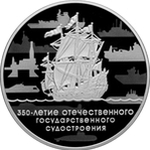 Problems of Historiography
Problems of Historiography
T.V. Alekseev
Reflection of the Prerequisites for the Formation of the Shipbuilding Industry in Pre-Petrine Russia in Russian Historiography
The article analyses the work of domestic researchers on the history of shipbuilding in pre-Petrine Russia. It was concluded that during this period certain prerequisites for the institutionalization of shipbuilding as a branch of national industry and military production were formed. It was shown that the experience of the pre-Petrine ship-building was used during the creation of the navy under Peter I. The degree of study of the problem in domestic historiography was estimated and promising directions of its further research were outlined.
Publishing: 28/06/2022
How to cite: Alekseev T.V. Reflection of the Prerequisites for the Formation of the Shipbuilding Industry in Pre-Petrine Russia in Russian Historiography // Historical Courier, 2022, No. 3 (23), pp. 203–221. [Available online: http://istkurier.ru/data/2022/ISTKURIER-2022-3-15.pdf]
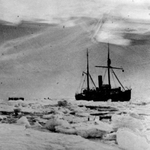 Problems of Historiography
Problems of Historiography
D.A. Anan’ev
The 20th Century History of the Russian Arctic and Northern Sea Route Development in the Russian and Foreign (English-Language) Historiography: Key Research Problems
The article gives an overview of the most important works published in the Russian and English-Language historiography dealing with history of the Russian Arctic development in the 20th century; determines key problems addressed by the researchers. It is shown that the Russian and foreign specialists using research tools of various theories (“colonization”, “modernization”, “frontier”) covered a wide range of issues related to the history of Arctic exploration, reorganization of administrative system, demographic and socioeconomic development especially during the Soviet period. Special attention was paid by historians to the history of transport communications, first of all, the development of the Northern Sea Route. A key feature of contemporary historiography is its attempt to put the history of the Russian Arctic into the global context considering it as a part of a single Arctic region.
Publishing: 28/06/2022
How to cite: Anan’ev D.A. The 20th Century History of the Russian Arctic and Northern Sea Route Development in the Russian and Foreign (English-Language) Historiography: Key Research Problems // Historical Courier, 2022, No. 3 (23), pp. 222–237. [Available online: http://istkurier.ru/data/2022/ISTKURIER-2022-3-16.pdf]
![The Journey of D.G. Messerschmidt to Siberia in the Fate of Researcher and the History: “Great Scientist” vs “Great Loser”: – Book Review: Putevoy Zhurnal Danielya Gotliba Messershmidta. Nauchnaya ekspeditsiya po Eniseiskoy Sibiri. 1721–1725 gody [The Travel Diary of Daniel Gottlieb Messerschmidt. The Scientific Expedition Across the Yenisei Siberia. 1721–1725] / Translated, compiled, commented by G.F. Bykonya, I.G. Fedorov, Ya.I. Fedorov. Krasnoyarsk: RASTR, 2021. 496 p., ill. The Journey of D.G. Messerschmidt to Siberia in the Fate of Researcher and the History: “Great Scientist” vs “Great Loser”: – Book Review: Putevoy Zhurnal Danielya Gotliba Messershmidta. Nauchnaya ekspeditsiya po Eniseiskoy Sibiri. 1721–1725 gody [The Travel Diary of Daniel Gottlieb Messerschmidt. The Scientific Expedition Across the Yenisei Siberia. 1721–1725] / Translated, compiled, commented by G.F. Bykonya, I.G. Fedorov, Ya.I. Fedorov. Krasnoyarsk: RASTR, 2021. 496 p., ill.](/en/../images/Data/2022-03/2022-3-17z.png) The World of Books
The World of Books
I.A. Shipilov
The Journey of D.G. Messerschmidt to Siberia in the Fate of Researcher and the History: “Great Scientist” vs “Great Loser”: – Book Review: Putevoy Zhurnal Danielya Gotliba Messershmidta. Nauchnaya ekspeditsiya po Eniseiskoy Sibiri. 1721–1725 gody [The Travel Diary of Daniel Gottlieb Messerschmidt. The Scientific Expedition Across the Yenisei Siberia. 1721–1725] / Translated, compiled, commented by G.F. Bykonya, I.G. Fedorov, Ya.I. Fedorov. Krasnoyarsk: RASTR, 2021. 496 p., ill.
From the standpoint of Messershmidt studies the author reviews the publication of thr expeditionary diary of D.G. Messerschmidt who was the leader of the first complex scientific journey to Siberia (1719–1727). The book contains diary entries made in 1721–1723 and 1725 by D.G. Messerschmidt and his assistant Ph.J. Tabbert von Strahlenberg in the territory of the Yenisei Siberia. The published source represents the work of the participants of the journey in the region according to the research program of D.G. Messerschmidt. The publication contains a preface that introduces the reader to the history and historiography of the expedition, a voluminous scientific and reference apparatus, and numerous illustrations. The analytics and criticism of the publication produced in review through the prism of the Messerschmidtological paradigm led to a conclusion about the popular science nature of the edition, in which the diary of D.G. Messerschmidt is the main scientific component.
Publishing: 28/06/2022
How to cite: Shipilov I.A. The Journey of D.G. Messerschmidt to Siberia in the Fate of Researcher and the History: “Great Scientist” vs “Great Loser”: – Book Review: Putevoy Zhurnal Danielya Gotliba Messershmidta. Nauchnaya ekspeditsiya po Eniseiskoy Sibiri. 1721–1725 gody [The Travel Diary of Daniel Gottlieb Messerschmidt. The Scientific Expedition Across the Yenisei Siberia. 1721–1725] / Translated, compiled, commented by G.F. Bykonya, I.G. Fedorov, Ya.I. Fedorov. Krasnoyarsk: RASTR, 2021. 496 p., ill. // Historical Courier, 2022, No. 3 (23), pp. 238–254. [Available online: http://istkurier.ru/data/2022/ISTKURIER-2022-3-17.pdf]
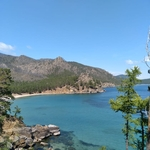 The World of Books
The World of Books
A.V. Kulikova
Modern Regional Reference Books Devoted to Water Resources of Russia: Annotated List
A previously unreleased list of publications published from 1992 to 2021 describing the hydro library (collection of water resources) of Russia is published. The bibliographic list is compiled by region. This publication should be regarded as a recommendation thematic list of literature, which to some extent will allow the reader to lift the veil over interesting (sometimes unexpected) aspects of studying the native land.
Publishing: 28/06/2022
How to cite: Kulikova A.V. Modern Regional Reference Books Devoted to Water Resources of Russia: Annotated List // Historical Courier, 2022, No. 3 (23), pp. 255–267. [Available online: http://istkurier.ru/data/2022/ISTKURIER-2022-3-18.pdf]
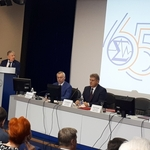 Scientific Life
Scientific Life
N.A. Kupershtokh
To the 65th Anniversary of the Siberian Branch of the Russian Academy of Sciences
Throughout its almost 300-year history, the Academy of Sciences has consistently maintained a strategy for the study of Siberia. At the beginning of the 20th century, the importance of studying the productive forces of the regions of Russia was formulated by Academician V.I. Vernadsky, whose precepts were followed by the Commission for the Study of Natural Productive Forces (CEPS). The mobilization strategies of the Soviet state caused the restructuring of the entire activity of the Academy of Sciences.
Publishing: 28/06/2022
How to cite: Kupershtokh N.A. To the 65th Anniversary of the Siberian Branch of the Russian Academy of Sciences // Historical Courier, 2022, No. 3 (23), pp. 268–272. [Available online: http://istkurier.ru/data/2022/ISTKURIER-2022-3-19.pdf]
 Scientific Life
Scientific Life
A Hundred-year Journey: to the Anniversary of the Institute of Mongolian Studies, Buddhology and Tibetan Studies of the Siberian Branch of the Russian Academy of Sciences
On July 1 of this year, the 100th anniversary is celebrated by one of the oldest scientific institutions in Siberia – the Institute of Mongolian Studies, Buddhology and Tibetan Studies of the Siberian Branch of the Russian Academy of Sciences. Dating back to the creation in 1922 of the first Buryat scientific research institution in the history of the Buryat Scientific Committee, subsequently reorganized several times, the IMBT SB RAS received its modern name in 1997, becoming by that time a recognized world center for the study of the history, archeology and ethnography of Central Asia.
Publishing: 28/06/2022
 Scientific Life
Scientific Life
“Secondary Contribution” Award: The National Association of Endowments opens the Acceptance of Applications for Participation in the Annual Competition of Historical research
The “Secondary Contribution“ Award is awarded for the best research on the history of target capital in Russian pre-revolutionary philanthropy.
The mission of the award is to inform about the national traditions of endowments (“eternal deposits”, “inviolable capital”) as the foundation of Russian pre-revolutionary philanthropy.
Publishing: 28/06/2022



